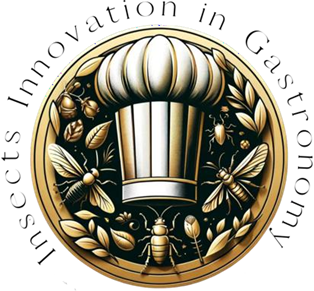Module 5 – Nutrition and Insect-Based Diets

About Course
Dear Participant
We are excited to welcome you to Module 5: Food Science and Technology in the Use of Insect-Based Ingredients. This module represents a crucial step in deepening your understanding of the nutritional value, safety, sustainability, and innovative applications of insect-based ingredients in the food industry.
During this module, you will have the opportunity to:
✅ Understand the key role of nutrition and how insects can support health, metabolism, and disease prevention.
✅ Explore edible insects as a sustainable solution to tackle global food challenges, thanks to their production efficiency and rich nutritional profile.
✅ Analyze the production and safety of insect-based ingredients, from farming to processing into flours, oils, and functional proteins.
✅ Deepen your knowledge of the technological properties of insect-derived ingredients, examining their impact on food formulations and industrial applications.
✅ Discover market applications, from traditional uses to the most innovative ones, such as 3D-printed foods and functional nutrition solutions.
The future of sustainable food lies in new frontiers of research and innovation—are you ready to be part of it? We encourage you to explore the course materials, actively participate in discussions, and experiment with new ways to integrate insects into modern food applications.
Happy learning and best of luck!
In order to follow your training process and receive a certificate at the end of the module, you need to register on the platform and enroll in the module. Although we strongly recommend you to register, you can access our training content without registering by using the links below.
Module 5 Syllabus-Script
Unit 1 Video Unit 1 Course Support
Unit 2 Video Unit 2 Course Support
Unit 3 Video Unit 3 Course Support
Unit 4 Video Unit 4 Course Support
Unit 5 Video Unit 5 Course Support
The Insect Gastronomy Innovation Team
Course Content
Pre Test Module 5
-
Module 5 Questions


